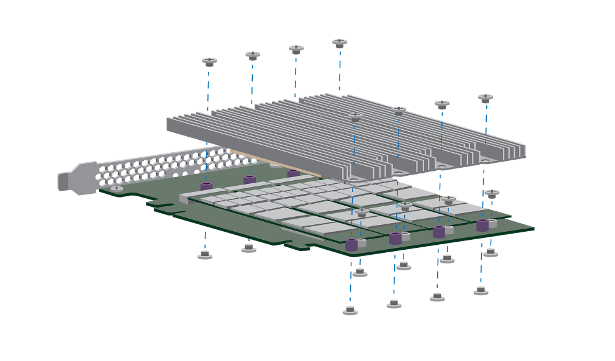The Open Compute Project Summit 2016 was held earlier this month in San Jose, CA, and Seagate was there demonstrating the fastest-ever SSD flash drive. What they were demoing was a production-ready solid-state drive (SSD) with throughput performance of 10 GB/s. This early unit meets Open Compute Project (OCP) specifications, creating an ideal solution for hyperscale data centers seeking to move to flash technology with the latest and most sustainable standards.
 The 10 GB/s unit is more than 4 GB/s faster than the previous industry-fastest SSD on the market. This new unit also meets the OCP storage specifications (driven primarily by Facebook), which helps mitigate the power requirements and cost factors that are historically associated with this level of operational performance.
The 10 GB/s unit is more than 4 GB/s faster than the previous industry-fastest SSD on the market. This new unit also meets the OCP storage specifications (driven primarily by Facebook), which helps mitigate the power requirements and cost factors that are historically associated with this level of operational performance.
 According to Brett Pemble, Seagate’s general manager and vice president of SSD Products, “Your data is only as good as how easily you can access it and put it to use. Seagate is committed to providing the full spectrum of technologies to help meet the diverse needs of organizations so they can unlock this value. Whether for consumer cloud or business applications, this SSD will help improve on demands for fast access to information, where split seconds drive incremental value gains.”
According to Brett Pemble, Seagate’s general manager and vice president of SSD Products, “Your data is only as good as how easily you can access it and put it to use. Seagate is committed to providing the full spectrum of technologies to help meet the diverse needs of organizations so they can unlock this value. Whether for consumer cloud or business applications, this SSD will help improve on demands for fast access to information, where split seconds drive incremental value gains.”
 Seagate’s latest technology is compatible with any system that supports the Non-Volatile Memory Express (NVMe) protocol, which was developed by Seagate, along with other consortium vendors, to replace the aging legacy Serial AT Attachment (SATA) standards. NMVe reduces overhead by reducing the layers of commands required, creating a faster and simpler communications means between flash devices.
Seagate’s latest technology is compatible with any system that supports the Non-Volatile Memory Express (NVMe) protocol, which was developed by Seagate, along with other consortium vendors, to replace the aging legacy Serial AT Attachment (SATA) standards. NMVe reduces overhead by reducing the layers of commands required, creating a faster and simpler communications means between flash devices.
Seagate was also displaying a second (soon to be finalized) unit for 8-lane PCIe slots, which also performs at an industry-leading 6.7 GB/s of throughput. The 8-lane solution provides an alternative to organizations seeking superior throughput speeds, but in environments with more limited power usage or cost objectives.
 The test system utilized to achieve and demonstrate the 10 GB/s and 6.7 GB/s performance was configured as follows:
The test system utilized to achieve and demonstrate the 10 GB/s and 6.7 GB/s performance was configured as follows:
- Quanta Leopard Server
- 2 X Intel Broadwell CPUs
- 32GB memory
- Centos 7 w/ kernel version 4.4.0-1
- Medusa Labs Maim exerciser
The 10 GB/s version is an OCP-compliant 16-lane PCIe single add-in card (based on M.2 form factor X 4). The 6.7 GB/s version is an OCP-compliant 8-lane PCIe single add-in card (based on custom modules similar to previous Nytro cards).
Seagate also displayed at the summit a single OCP-compliant 8-lane PCIe add-in card achieving 1,000,000 IOPS. The IOPS test was 4K random reads with a queue depth of 128, and the flash media was preconditioned with 4K random writes.
 Seagate has made both the 16-lane and 8-lane units available to customers for qualification, with product launch anticipated for summer of 2016. You can view the Seagate press release announcing this event in its entirety here.
Seagate has made both the 16-lane and 8-lane units available to customers for qualification, with product launch anticipated for summer of 2016. You can view the Seagate press release announcing this event in its entirety here.
 The SSD Review The Worlds Dedicated SSD Education and Review Resource |
The SSD Review The Worlds Dedicated SSD Education and Review Resource | 